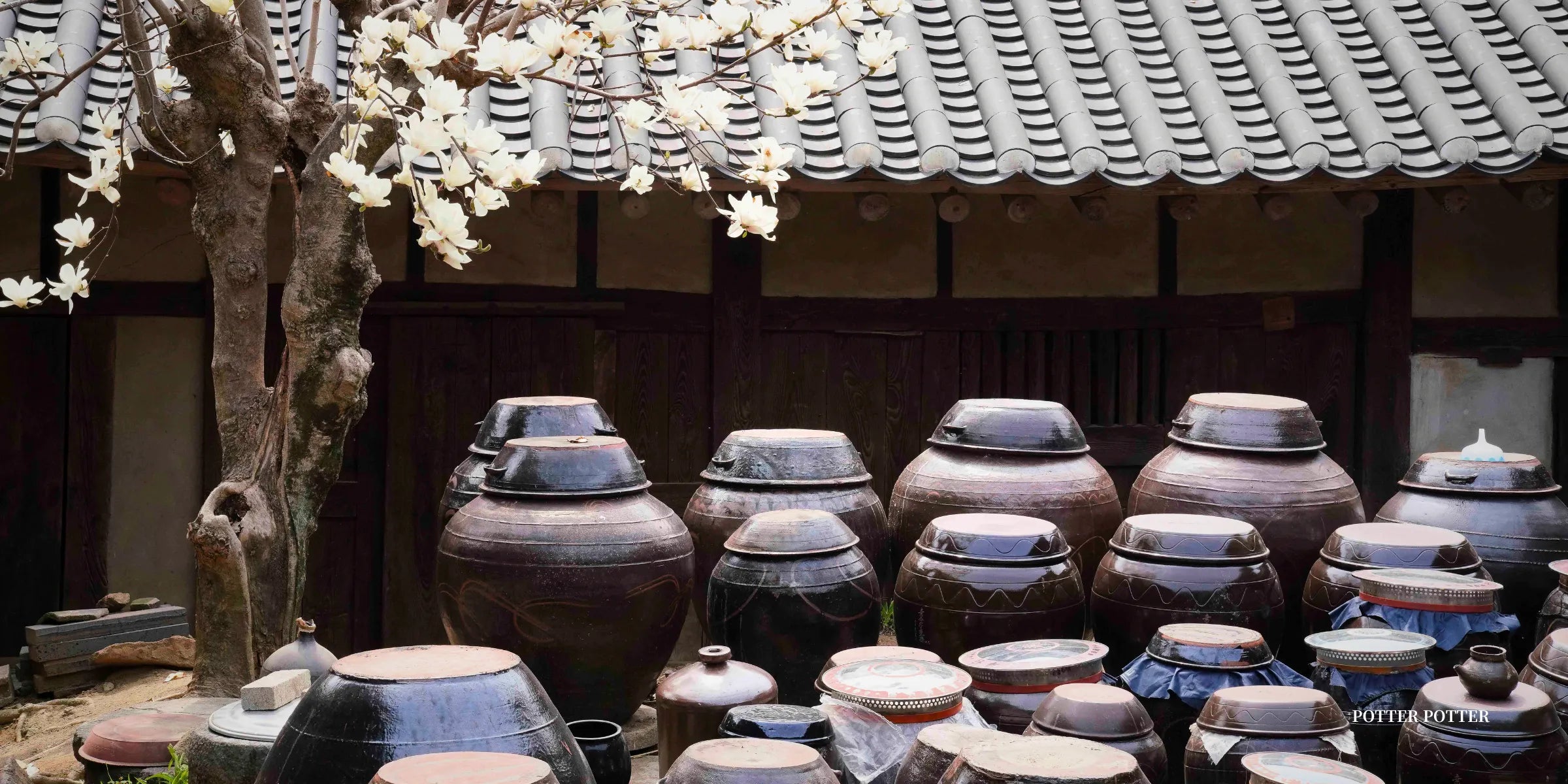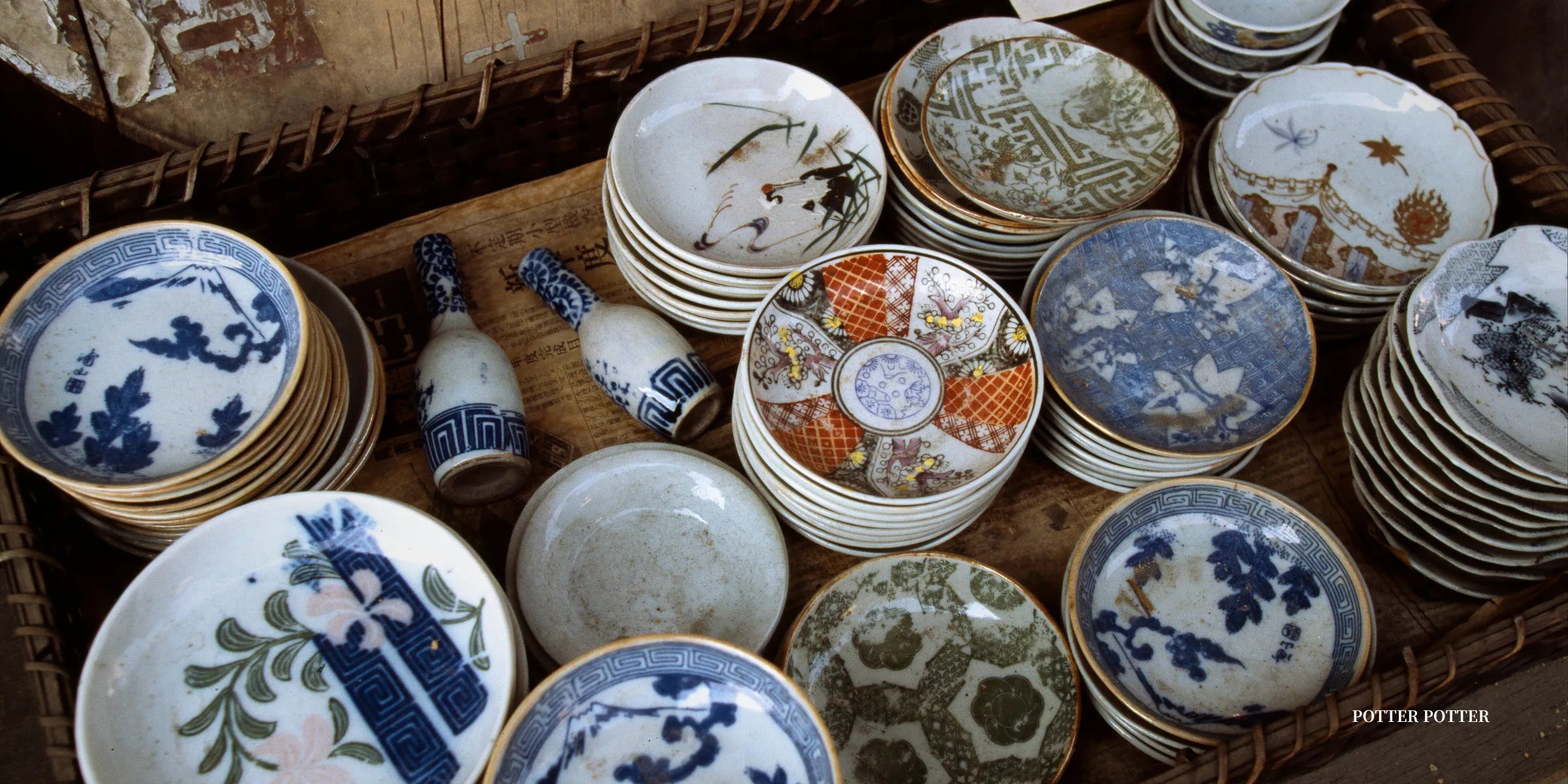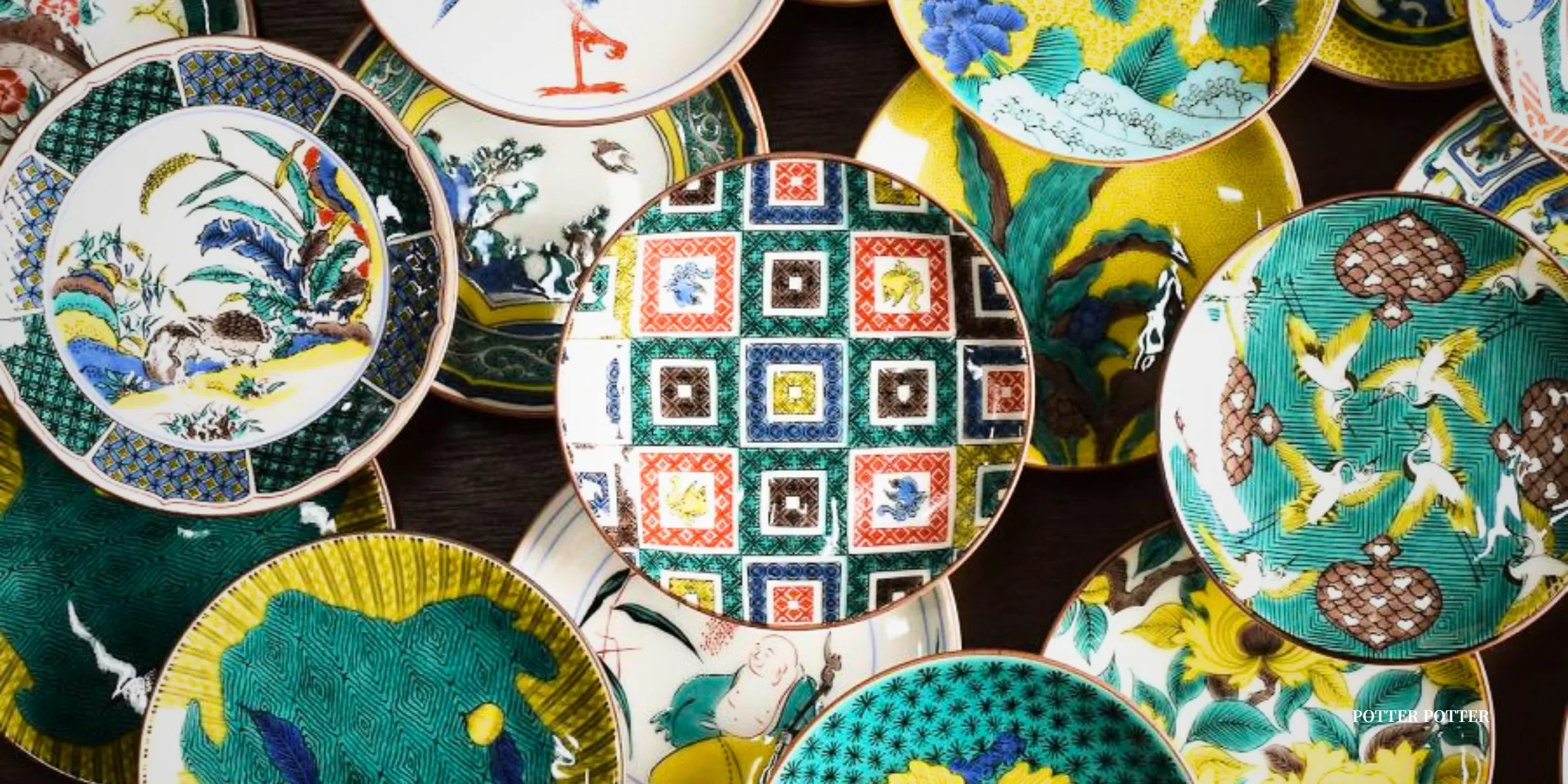
History of Korean Pottery: From Goryeo to Joseon
Have you ever wondered about the origins of Korean pottery and its evolution into a globally admired art form? Beginning in prehistoric times, Korea’s pottery developed from simple earthenware into refined celadon and porcelain, reflecting a rich cultural history shaped by centuries of innovation and craftsmanship.

|
Table of Contents |
Early Beginnings of Korean Pottery

Korean pottery dates back to around 5000 BCE during the Neolithic period, beginning with primitive clay vessels used for cooking and storage. The first significant style, known as bitsalmunui pottery, featured unique patterns created by pressing cord-like ropes into the surface of the clay. This type of pottery was widespread across the Eurasian continent and was a key example of early ceramic traditions in Korea.
As pottery techniques evolved, a simpler, more functional style of unadorned earthenware emerged. By around 1000 BCE, Korean potters had developed a more diverse range of styles, with some early pieces resembling those found throughout the wider region. A significant shift occurred during the Three Kingdoms period (57 BCE – 668 CE), which saw the rise of the ancient Korean kingdoms of Goguryeo, Baekje, Silla, and Gaya. During this time, the potter’s wheel and kiln-firing technology arrived from China, leading to the creation of harder, more durable tochil pottery.
One of the most notable developments during this period was the introduction of green-glazed pottery. This early form of glazed pottery, fired at relatively low temperatures, represented a major step forward in Korean ceramics. By the Unified Silla period (668–935 CE), this green-glazed pottery had become more sophisticated, laying the foundation for the rise of celadon in the Goryeo Dynasty.
Goryeo Dynasty: The Emergence of Celadon

The Goryeo Dynasty (918–1392) is often regarded as the golden age of Korean pottery, primarily due to the emergence of the renowned Goryeo celadon. This period saw significant influence from China, particularly from the Song Dynasty, but Korean potters quickly developed a unique style that distinguished their work on the global stage.
The hallmark of Goryeo celadon was its beautiful jade-green glaze, often referred to as bisaek or “secret blue.” Early Goryeo celadon was inspired by Chinese Yue ware, but by the 12th century, Korean potters had mastered the sanggam (inlay) technique. This method involved carving intricate designs into the surface of the pottery and filling them with contrasting colored clays, usually white or black, before applying the signature celadon glaze. The result was a stunning, intricate pattern that highlighted the artistry and technical skill of Goryeo potters.
In addition to the sanggam technique, Goryeo potters experimented with other forms of decoration, such as tugak (openwork carving), which involved cutting out portions of the vessel to create intricate, lattice-like designs. They also used copper pigments to create a striking red glaze, a technique known as jinsa.
The two primary centers of Goryeo celadon production were located in the southwestern regions of Gangjin and Buan, areas that became synonymous with the finest examples of Korean celadon. While Goryeo celadon reached its peak in the 12th century, the political instability of the 13th and 14th centuries, coupled with external threats, led to its eventual decline.
Joseon Dynasty: The Rise of White Porcelain

Following the fall of the Goryeo Dynasty, the Joseon Dynasty (1392–1910) marked a significant shift in the history of Korean pottery. The elaborate celadon of the Goryeo era gave way to the simplicity and elegance of baekja, or white porcelain, which reflected the new Confucian ideals embraced by the Joseon rulers. White porcelain became the dominant form of pottery during this period, prized for its pure and unadorned beauty.
The production of white porcelain was centered in government-run kilns known as gwanyo, particularly in the Gwangju area of Gyeonggi Province. These kilns produced pottery for the royal court and the aristocracy. Early Joseon white porcelain was simple and unembellished, in keeping with Confucian values of modesty and restraint. However, by the 15th century, potters began experimenting with cheonghwa baekja (blue and white porcelain), a technique that involved painting designs in cobalt blue pigment before applying a clear glaze.
In the mid-16th century, a shortage of cobalt due to disrupted trade led Korean potters to adapt by using iron oxide instead, resulting in the creation of cheolhwa (iron-painted wares). These pieces featured darker, brownish-black designs on the white porcelain background, showcasing the adaptability and resilience of Korean potters.
Another significant style that emerged during the Joseon period was buncheong ware. This technique involved applying a white slip to the pottery before carving or stamping designs into it and then applying a glaze. The buncheong style, which had a more rustic and spontaneous feel compared to the refined celadon of the Goryeo period, became popular for everyday items such as bowls, plates, and jars.
Despite the challenges posed by invasions and internal strife, Joseon pottery continued to flourish throughout the dynasty. By the 17th century, official kilns had become highly specialized, producing not only functional wares but also works of art that reflected the philosophical and aesthetic ideals of the time.
Cultural and Philosophical Influence on Korean Pottery

Korean pottery has always been closely linked to the cultural and philosophical currents of the time. During the Goryeo Dynasty, Buddhism played a significant role in shaping artistic expression, including pottery. Buddhist motifs, such as lotus flowers and other natural elements, were commonly used in the decoration of celadon pieces, reflecting the spiritual and contemplative nature of the Buddhist faith.
With the rise of the Joseon Dynasty, Confucianism became the dominant philosophy, influencing all aspects of Korean society, including pottery. The austere and minimalist aesthetic of Joseon white porcelain was a direct reflection of Confucian values, which emphasized simplicity, discipline, and moral integrity. Even the most finely crafted Joseon porcelain pieces exhibit a restrained elegance that reflects these ideals.
As the Joseon Dynasty progressed, pottery began to cater to a broader range of social classes, including the growing middle class. Pottery with auspicious motifs, such as symbols of longevity or good fortune, became increasingly popular. These pieces were not only practical but also served as expressions of cultural identity and personal taste.
The End.
The history of Korean pottery, from its humble beginnings as earthenware to the refined artistry of celadon and white porcelain, represents a rich cultural legacy that has endured for thousands of years. Despite the challenges posed by foreign invasions, political turmoil, and economic hardship, Korean potters continued to innovate and produce beautiful, functional works of art that have had a lasting impact on the world of ceramics.
Today, the legacy of Korean pottery lives on in museums and collections around the world, where its timeless beauty and craftsmanship are celebrated. For those interested in exploring Korean pottery further, a visit to the National Museum of Korea or the Goryeo Celadon Museum in Gangjin is highly recommended. These institutions offer a glimpse into the artistry and techniques that have shaped Korean pottery throughout the ages.
Korean pottery, with its deep connections to culture, philosophy, and artistry, remains one of Korea’s most significant contributions to the world of ceramics. Whether you are a historian, an art lover, or a collector, the enduring legacy of Korean pottery is one that continues to inspire admiration and respect.

